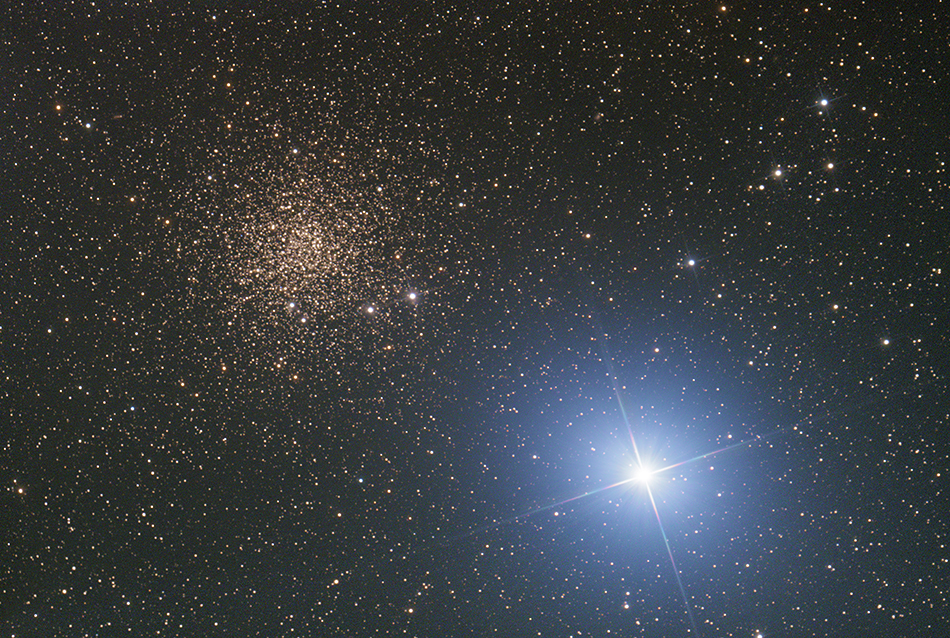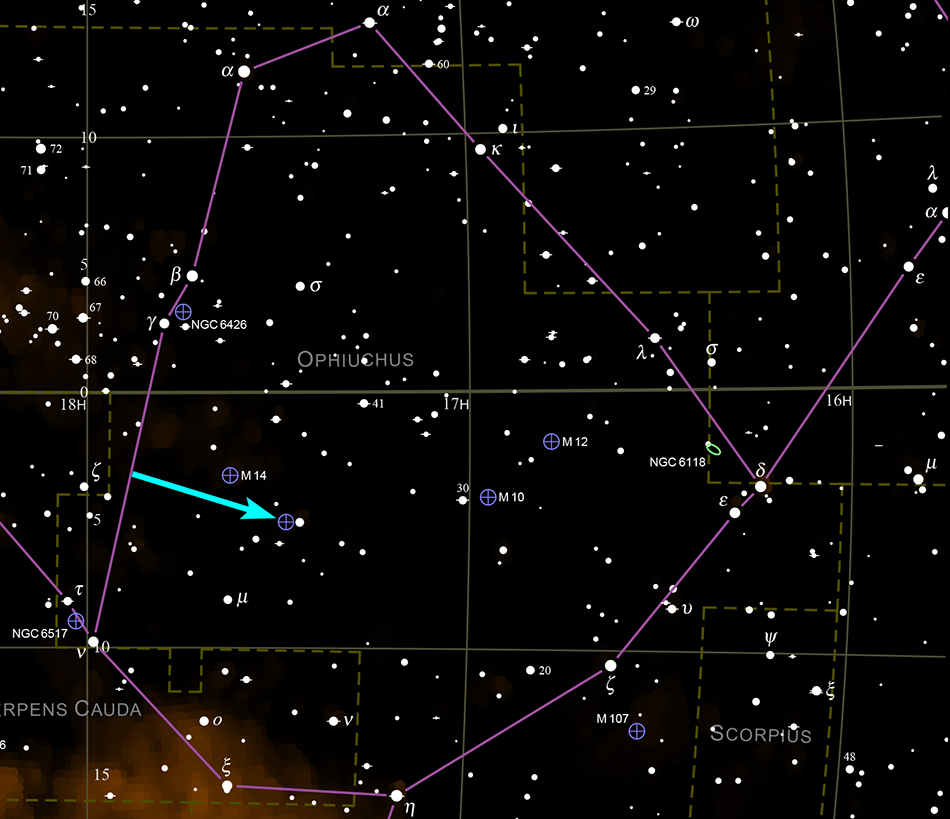

| Object name: | Constellation: | Coordinates: | Apparent size: | Visual brightness: |
|---|---|---|---|---|
| NGC 6366 | Ophiuchus | 17h28m / -05°05' | 13' | 9.5 mag |
The globular cluster NGC 6366 ("Ophiuchus Ghost Globular", GCL 65) in the constellation Ophiuchus. The loosely concentrated type XI globular cluster is reddened by interstellar absorption (dust in the Milky Way) and contrasts the blue-white 4.5-mag foreground star 47 Ophiuchi. NGC 6366 is a metal-rich cluster - similar in composition to Messier 71. It shows a deficit of stars with 0.5-0.7 solar masses. Over time, high-mass objects settled in the cluster core and threw low-mass stars to the periphery of the cluster where tidal stripping removed them from the cluster. NGC 6366 is roughly 11,700 light-years from Earth, making it one of the closest to the Sun. It was discovered by German astronomer Friedrich August Theodor Winnecke in 1860 (source: Wikipedia / Nathaniel E. Q. Paust et al 2009 AJ 137 246).
Fifty 3-minute exposures (150 minutes total exposure) at gain 100 taken on July 1/2, 2022 and on July 2/3, 2022, were added for this shot with the Astro Pixel Processor (APP) software and the final image processing was done in Photoshop. Darks, flats, bias and dark flats were used.
Equipment: Cooled ASI 2600MC Pro camera, TeleVue Paracorr Type II coma corrector, 16" f/4.5 "Ninja" dobsonian telescope riding on a dual-axis Tom Osypowski equatorial platform, Lacerta MGEN autoguider, Lacerta off axis system.
